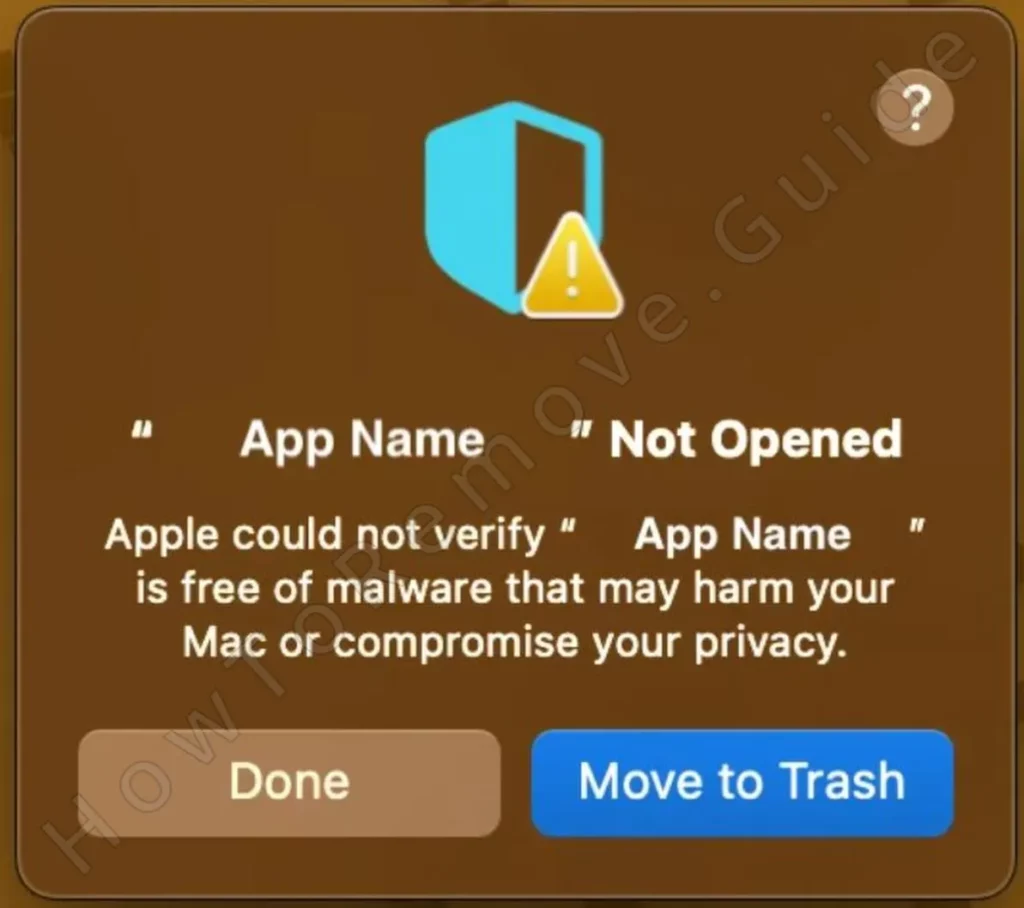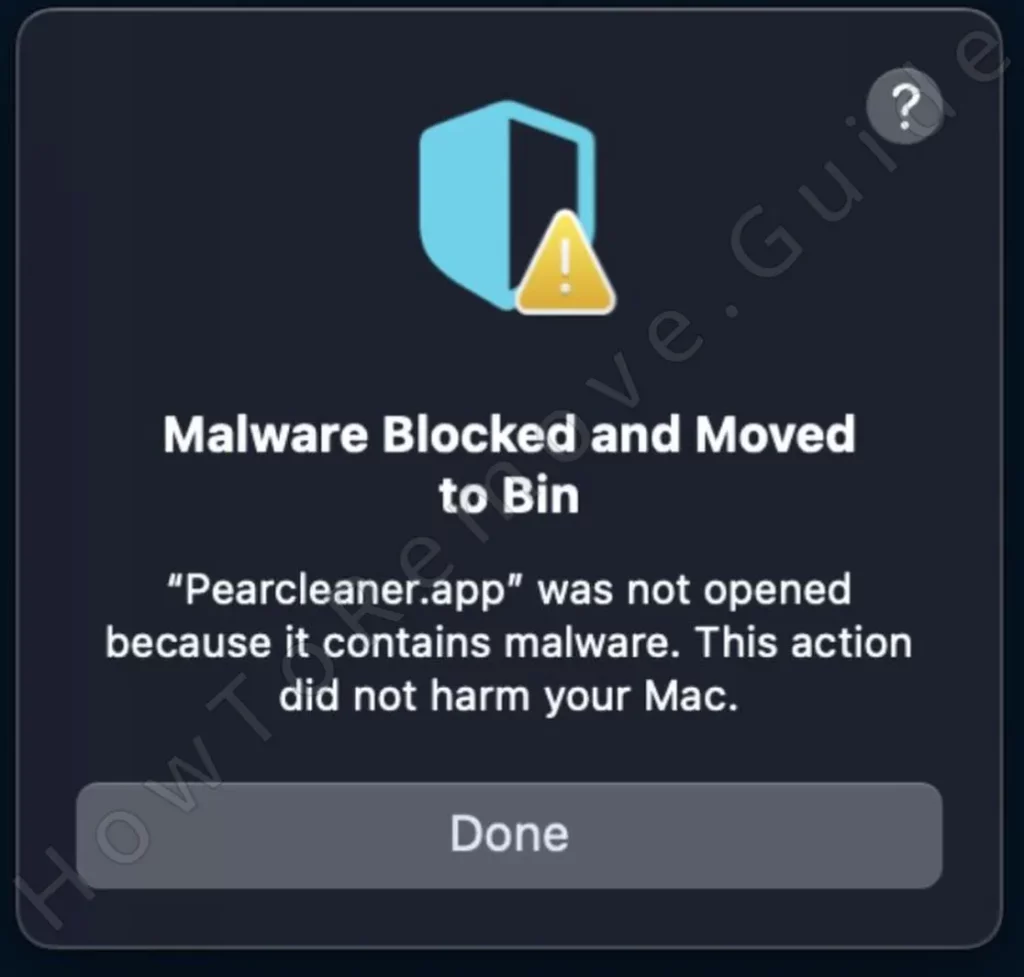One of the most common problems Mac users encounter is an error message that reads “Apple could not verify *App Name* is free of malware”. This happens when the user attempts to open an app that hasn’t been notarized by Apple, which means your system cannot guarantee that it’s safe. Because of this, you are prevented from opening it, but this doesn’t mean that you can’t override the warning message and still run the app – this is actually quite easy.
The real question here is whether you should do that. Especially in recent days, this warning message has started popping up more frequently than usual, which seems to be due to stricter system security introduced with the macOS 15 (Sequoia) update.
In the next lines, we’ll go into more detail about what this warning message really means, whether there’s a way to know if an app is truly safe, and also what to do in case you’ve opened something harmful that must be removed. Let’s get started!
How to Bypass the “Apple Could Not Verify” Message?
In case you are impatient to open a particular app that triggers this warning and you are sure said app isn’t harmful, here’s how to override the error message and run the software:
- Attempt to open the app again and once the “Apple could not verify is free of malware” appears, close its window.
- Open the Apple Menu from the top-right and go to System Settings.
- Find and click on Privacy & Security in the left panel (you’ll need to scroll down a bit).
- Now scroll down in the right panel until you get to Security. There, you should see an “Open Anyway” button for that app. Click it.

- You’ll be asked to enter your Admin password, so do it and click OK. The app will now open.
The next time you want to run that application, you should be able to open it normally, by double-clicking its icon.
“Apple Could Not Verify App Is Free of Malware” Error Message Explained
The “Apple could not verify *App Name* is free of malware” message is pretty vague and the meaning behind it isn’t always clear to the user. You are not directly told that the app you are attempting to open is harmful, but you are warned that it might be.
So what should you do if you are trying to run a piece of software you need, but this message pops up when you double-click it? To answer this question, we must first look at how Apple’s macOS system keeps the user protected.

There are several layers of security in macOS and one of them is the so-called Gatekeeper. This feature works by checking whether a given app is signed by an Apple-authorized developer, which means the application has undergone extensive testing for harmful code and has received Apple’s seal of approval.
In other words, the chances of such an app containing malware are exceedingly low. However, there are millions of legitimate, safe, and useful apps that aren’t notarized by Apple and get flagged by the macOS Gatekeeper. For better or for worse, this groups them with software that is indeed harmful and shouldn’t be downloaded.
What Is the “App Not Opened Because It Contains Malware” Popup on Mac?
Since the Gatekeeper isn’t precise enough to tell you if a particular app is genuinely malicious, macOS has another layer of protection against malware, which is known as XProtect and Malware Removal Tool (MRT). This is a more focused security feature that works a bit more like a conventional antivirus. It runs automatic scans and deletes known malware based on malware definitions that are being constantly updated.
If XProtect detects suspicious code in an app you are attempting to run, it will give a “*App Name* was not opened because it contains malware” error. This message is different from the “Apple could not verify *App Name* is free of malware”. It signals a more serious warning and if you see it when trying to open a given app, you should better respect it and not run the app in question, because it can be actual malware like Psoriasis, for example.

In some instances, a safe app could still get flagged by the XProtect feature and trigger the “contains malware” message, which is also known as a false positive.
Recent examples of apps that trigger the XProtect warning are xampp, qbittorrent, and ryujinx.
If you are certain this is the case with the software you want to open too, this is way to override this warning:
- Click the Done button in the malware warning pop-up, open the Bin, right-click the blocked app, and click Restore.
- Right-click the restored app, and select Get Info.
- There, you should see an “Override malware protection” option – enable it.

- You may be asked to enter your Admin password, so do it to complete the action.
- Try to run the app again. If it still won’t open, go to System Settings > Privacy & Security > Privacy, and click Open Anyway, like we showed at the start.
Note: Some open-source apps from GitHub have begun triggering this malware warning since the macOS 15 (Sequoia) update. If the app you want to run is from a developer on GitHub, we recommend checking its page again for the latest version. Chances are that the app’s dev has made the necessary changes so that it no longer triggers XProtect.
How to Know If an “Apple Could Not Verify” App Is Safe?
We already explained the two most common macOS security errors you can encounter and what they mean. Now it’s time to try to figure out if the specific app you want to run is safe or not.
But before we do that, a friendly warning: there can never be a hundred percent certainty so the final decision whether to ignore the warnings and run the app is entirely yours.
With that out of the way, here are the ways you can determine if an app that triggers the “Apple Could Not Verify” warning is safe to open:
Look Up the App and Its Developer
This might seem like an anecdotal approach, but we’ve time and time again seen proof of its effectiveness. If you search for opinions on a particular app and everyone on popular forum sites like Reddit or the Apple Support Community says it’s safe, you can be almost certain you can run that software without worry. The same rule applies if most people report a given app is harmful – you should probably trust them and not run it.
Use VirusTotal
VirusTotal is a website where you can scan files for free to see if they contain malware. The scan feature uses over 70 antivirus engines and gives you their individual detection results. In most cases, if a given piece of software is harmful, there will be a number of detections when you scan it on VirusTotal.
Use an anti-malware tool
Macs rarely need to rely on third-party security programs for protection, but a specialized tool can still help you determine if a given app is truly harmful, or it simply doesn’t comply with Apple’s strict security standards. The tool we recommend for such instances is SpyHunter. Its exhaustive scanner detects even the tiniest hints of malicious code, but generally doesn’t flag as a threat something that’s not harmful.
Use your common sense
Ultimately, the decision whether to run a given app is determined by your common sense. For instance, if you downloaded the app from a reliable source and/or if you’ve previously run it without an issue and the error started showing up after the Sequoia update, then the app is likely safe. But if you’ve never had it before on your Mac and you got it from a questionable site, then you may want to reconsider opening it.
How to Remove the “Apple Could Not Verify” Virus?
If you’ve already run an app that triggered the “Apple Could Not Verify” warning and it turned out the app is malware, then you must make sure to delete it and all its data immediately.
Since we’ve got no way of knowing what that application is in your case, we can only provide generic steps to give you an idea of what must be done. For more detailed steps, we recommend searching for the specific malware on our site to see if we have a dedicated article, where we provide specific removal instructions.
SUMMARY:
| Name | “Apple Could Not Verify” |
| Type | Adware |
| Detection Tool |
Here’s what you can do for now:
- Go to the Applications folder, find the rogue app, right-click it, and send it to the Bin. Then remember to empty the Bin.
- Next, go to the Apple Menu > System Settings > Users & Groups. There, delete any user profiles that aren’t created by you.
- Then go to the General > Login Items and remove from the list anything that looks suspicious.
- Then click the Go button from the top, click Go to Folder, type “/Library/LaunchDaemons” and hit Enter.
- Delete any suspicious files you might find there. This includes files with random letters and numbers as their names or with names that contain any of the following words:
- calculator
- calender
- confcloud
- copypaste
- date
- fixer
- gettime
- helper
- hlpr
- mafntask
- moniter
- pcv
- scan
- search
- smokyashan
- systemond
- systemExtr
- spigot
- techyutil
- time
- updService
- util
- utilty
- vlm
- You can also use this Apple Support Community threat to learn what files to look out for.
- Also go to “~/Library/LaunchAgents” and “/Library/LaunchAgents” and do the same thing there.
These steps should often be enough to clean your Mac from malware, but not always.
If you want to be certain that your system is clean, we recommend using the powerful SpyHunter 5 anti-malware tool that you’ll find on this page.



Leave a Reply